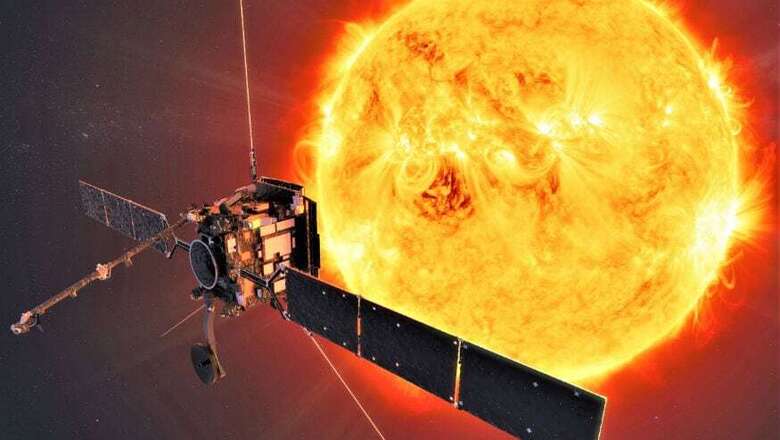
views
Despite being millions of miles away, our Sun has a profound impact all across the solar system. Among its other aspects are solar flares, or solar storms, which are so powerful that they can still be devastating in terms of the impact, even at millions of miles away. It is this that NASA's next mission, dubbed SunRISE, aims to study. The Sun Radio Interferometer Space Experiment (SunRISE) has now been put in motion by NASA, with the mission operating at $62.6 million estimated cost, a design that includes combining six CubeSats into a rather large space telescope unit, and an estimated launch date of July 2023.
The ultimate objective of the mission will be to study solar flares, which occur due to turbulent solar surface reactions, and understand how the radiation spreads through space, how they impact against planetary atmospheres and surfaces, and how this can affect the future astronauts who are projected to travel to the moon and Mars. The solar flares create radiation that can have drastic impact on different aspects of our planet — while timid solar radiation only causes the beautiful aurora borealis, or the Northern Lights, severe solar storms are known to have the potential to take down power grids and affect commercial aviation.
It is this impact of radiation that NASA's SunRISE mission will study. The project will configure six CubeSats, each said to be the size of the average toaster, to fly within six miles of each other in close formation, and fly above the Earth's atmosphere. This will be crucial, since the atmosphere shields most of the solar radiation from our planet's surface. These CubeSats will then observe low frequency emissions sent out due to the solar storms on the surface of Earth's closest star, and create radio images that will be relayed back to Earth using the NASA Deep Space Network.
These images will create 3D maps of the solar radiations to create a full sketch of how the solar radiations spread across the solar system, and gauge patterns of how solar storms transit through the solar system. This can be crucial to understand how solar radiation spreads through the solar system, and affects surfaces of planetary bodies such as Mars and the moon, which do not have the dense atmosphere that Earth does, and is hence exposed to the solar radiation at a surface level. As a result, once the NASA Artemis manned missions begin to take humans back to the moon, and eventually onward to Mars, such missions will be critical to understand how extraterrestrial elements can impact the health of humans.
NASA already has undertaken missions that will aim to get a better understanding of the sun, and observe the solar surface at close proximity. This will also help humans understand solar reactions closely, and pre-emptively prepare the planet against solar bursts and other eccentricities.


















Comments
0 comment